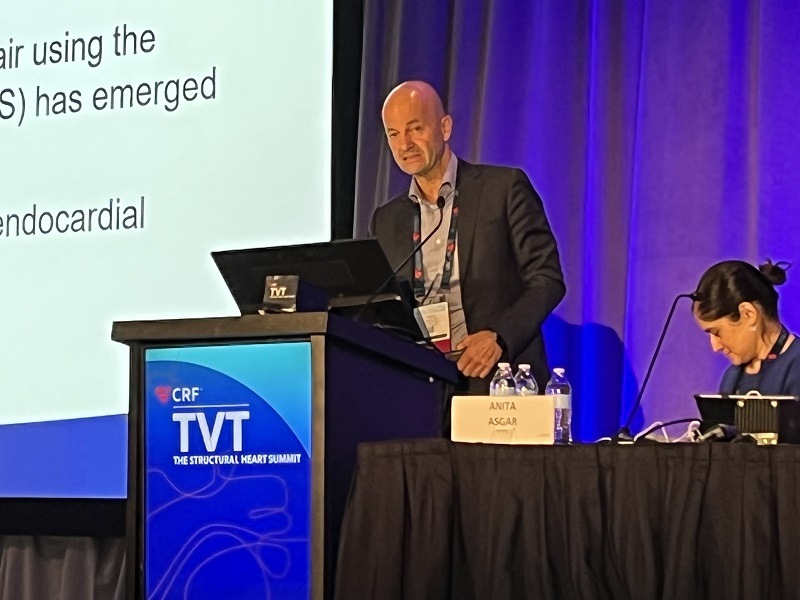
Data from the first report on patients with a pacemaker lead across the tricuspid valve have shown that implant of the TriClip and TriClip G4 transcatheter edge-to-edge repair (TEER) systems (Abbott) significantly reduces tricuspid regurgitation (TR) and improves quality of life.
These were among the conclusions presented by Georg Nickenig (University Hospital Bonn, Bonn, Germany) during a late-breaking trial session at TVT 2022 (The Structural Heart Summit, 8–10 June, Chicago, USA), where he delivered insights from the TRILUMINATE and bRIGHT studies looking at the TriClip transcatheter device in patients with TR with endocardial leads.
Patients with TR who are candidates for transcatheter repair commonly have a pacemaker lead across the tricuspid valve, though this patient population has not specifically been studied. Combined outcomes from the TRILUMINATE and bRIGHT prospective, single arm, multicentre trials examined whether TR patients previously implanted with a pacemaker lead can benefit from the TriClip device.
In patients with TR and a pacemaker lead across the tricuspid valve, 30-day results of the TriClip and TriClip G4 TEER systems from the two studies demonstrated a high rate of implant (98%) and acute procedural (91%) success, as well as at least a two-grade TR reduction in 64% of patients.
Investigators reported life-changing clinical improvements including 69% of patients achieving New York Heart Assocation (NYHA) functional class I/II, an improvement by 57% from baseline of 12%, with a marked 19-point improvement in Kansas City Cardiomyopathy Questionnaire (KCCQ) score.
“This late-breaking data debunks traditional thinking that patients with pacemakers may not be eligible for or respond to tricuspid TEER therapy,” Nickenig was quoted as saying in a press release circulated by Abbott following the presentation of the findings. “The findings continue to demonstrate TriClip’s ability to reduce TR and improve quality of life in a broad range of anatomies.”










